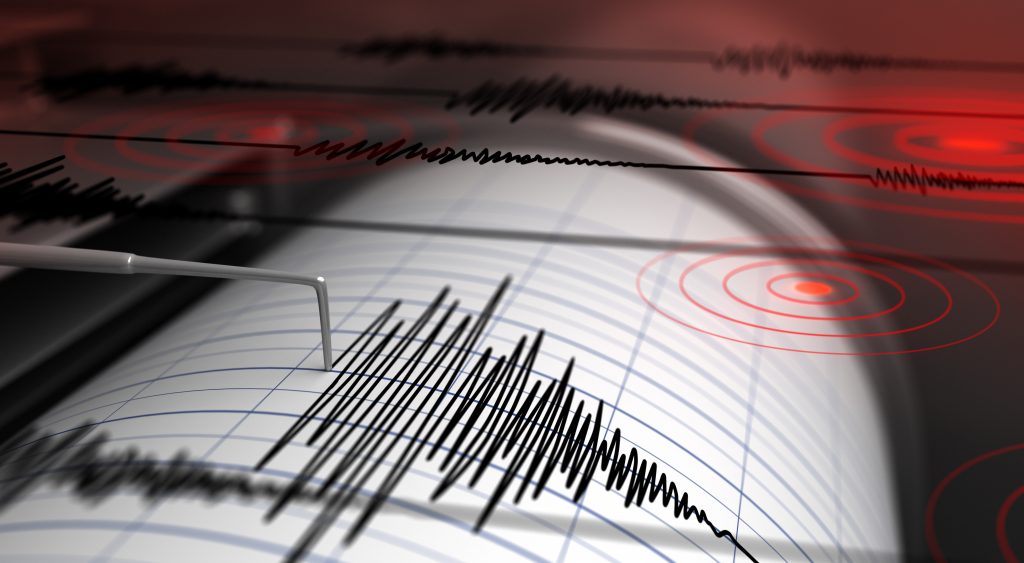
Recent earthquakes right in the heart of Utah may turn out to be nothing, but experts warn they’re a preview for something far worse that could literally tear the valley to pieces. What you need to know and how to prepare.
“The Big One” (as it’s lovingly known) is a well-worn topic around dinner tables here in Utah and has been for the better part 50 years. It’s something we think about often. It’s something we worry about. And if the experts are correct, it’s something we’ll be experiencing before too long.
A recent wave of temblors smack dab in the middle of the most populous area of the state has brought long-standing anxieties about The Big One bubbling to the surface. With earthquakes top of mind at the moment, it’s worth answering some of the pressing questions that have a lot of people worried.
NEED HELP PREPARING FOR AN EARTHQUAKE? GET OUR DEFINITIVE PREP GUIDE!
Question 1: Is Utah really earthquake country?
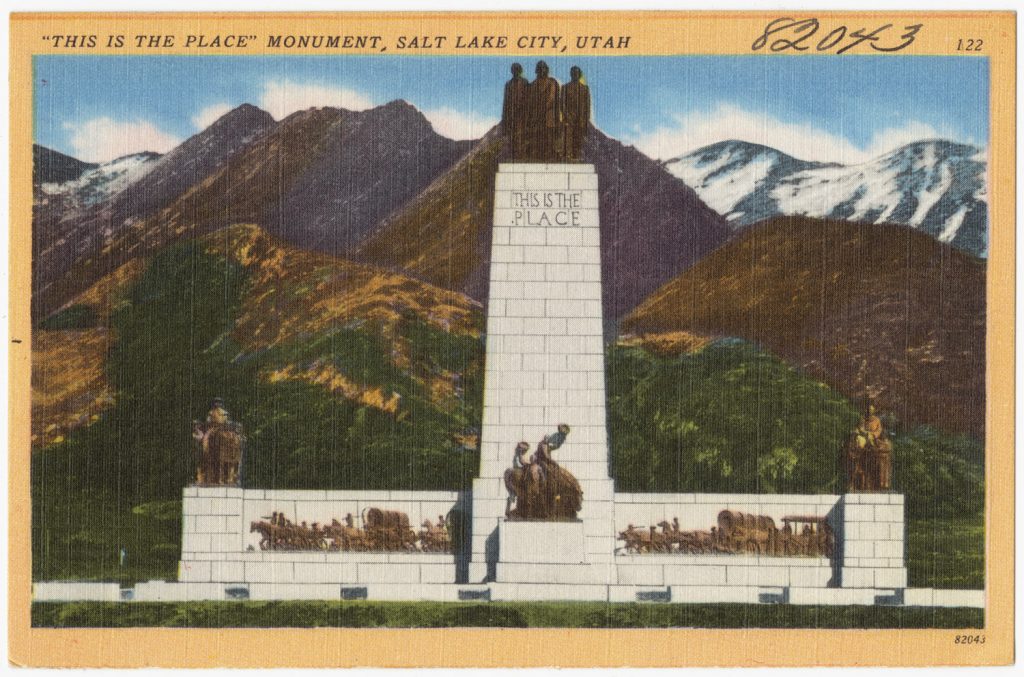
The short answer is a definitive yes, and if we needed any reminder of that fact we’ve certainly gotten it over the last few days.
The areas of Bluffdale in southern Salt Lake County and Kanosh in Millard County (about 120 miles apart) have been hit by no fewer than 106 combined earthquakes since Friday, February 15.
As alarming as that’s been for folks in Salt Lake and Utah counties, it’s actually business as usual in a state that gets about 700 earthquakes a year. That number places it somewhere in the top 10 for earthquakes by frequency and severity (Alaska’s number one, followed by California, Nevada, and Hawaii).
What
is unusual about this cluster of quakes is the distance between them.
“Usually when your [alarms] go off three times in a day, it’s all earthquakes in the same place" University of Utah seismologist James C. Pechmann said.
That’s not to say there’s necessarily cause for worry.
“I don’t think they’re related,” Pechmann said. “They’re too far away from each other. And they’re not big enough to cause what we call remote triggering,” where a large earthquake in one location sets off another outside its own aftershock zone.
The most important thing about the quakes is that they’ve reminded us we’re sitting ducks to these severe natural disasters.
But just how vulnerable are we?
Joe Dougherty with the Utah Division of Emergency Management puts the odds that we’ll be hit by “The Big One” at 50 percent in the next half-century.
"Worst case scenario for Utah…would be a 7.0 magnitude earthquake that happens along the Wasatch Front,” he said.
Dougherty’s estimation might skew a little high. Semiologists at the University of Utah give us a 25 percent chance of experiencing a major quake (in the realm of 7.5 magnitude) in the next 50 years. Historically, the Wasatch Front gets a “Big One” every 350 years, and it’s been about that long since the last one hit. We are well on our way to past due.
Any way you cut it, there's a significant likelihood that many of us will live to see a massive earthquake in Utah.
Question 2: What would happen if a major earthquake were to hit the Wasatch front?
The answer to this question all depends on where exactly the earthquake is centered, and the news on that front is a little troubling.
Over the last 6,000 years, nearly all the large earthquakes occurring along the Wasatch front have hit in the 150-mile stretch between Brigham City in the North and Levan in the South (about 40 miles outside of Payson and a just few minutes from the Utah county line).
[caption id="attachment_29522" align="alignnone" width="591"]
 In 6,000 years, most Utah earthquakes have occurred in this stretch in the most populated area of the state.
In 6,000 years, most Utah earthquakes have occurred in this stretch in the most populated area of the state.[/caption]
For most of us in Utah, that small stretch of land has a very special name: home. 75% of the state’s population—a little over 2 million people—live in the four counties between Brigham City and Levan (Weber, Davis, Salt Lake, and Utah).
To give some perspective, the population of those adjacent counties is about on par with Cleveland and Pittsburgh and well above cities like New Orleans and Nashville. We’re no NYC, but we’re a major metropolitan area—hovering right around the top 30 in the country.
That means, short of California, we’ve got more humans crammed along a major fault line than almost anywhere else in the US. And unlike most places in California, there are a few unique geographic features that put us at especially acute risk in the event of a 7.0-plus earthquake.
Lakes pose a major flood risk
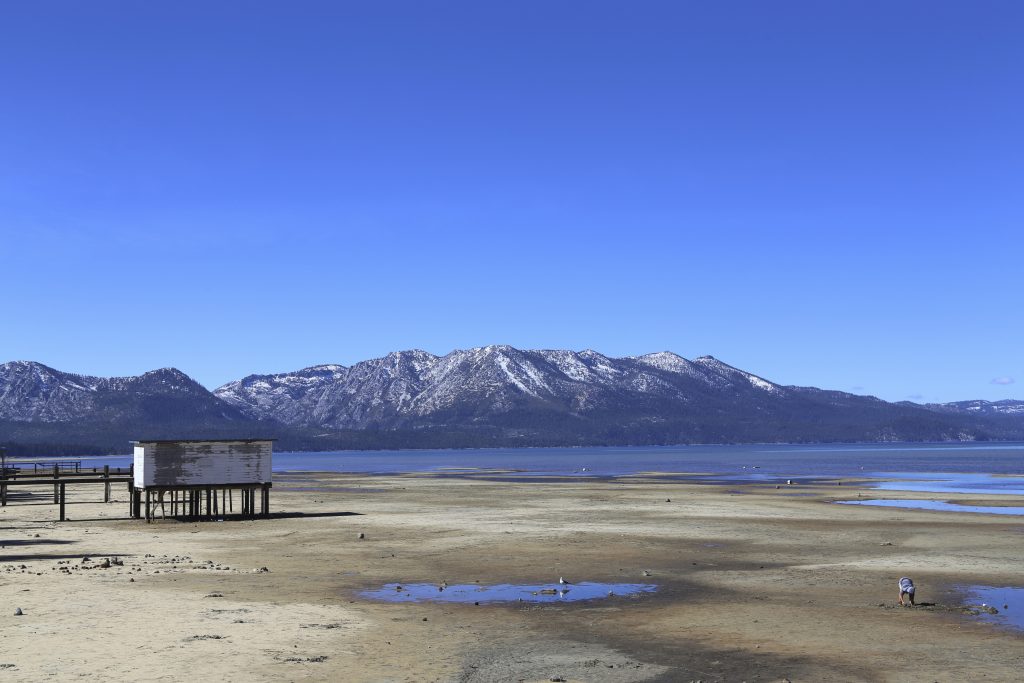
Foremost among these are two major lakes: the Utah and Great Salt lakes, both them very close to major cities and hemmed in (at least in part) by mountains. Experts at the University of Utah Seismograph Stations warn that with the geological makeup of these valleys, a large earthquake could easily trigger ”soil liquefaction, landslides, rock falls, and broad permanent tilting of valley floors possibly causing the Great Salt Lake or Utah Lake to inundate parts of Salt Lake City or Provo.”
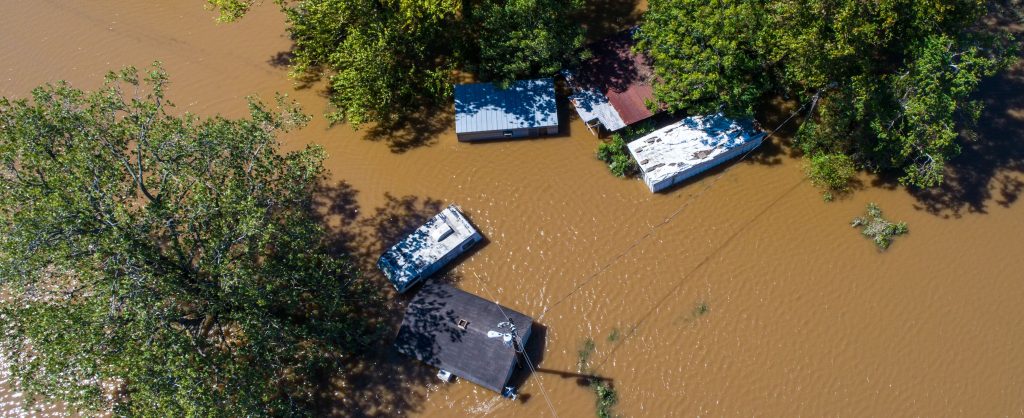
Floods may not sound too intimidating to folks in the middle of the country, but ask our friends in the coastal US—they’re just about the worst threat possible to property and life. During Hurricanes, for example, it’s not wind but floodwaters that cause most fatalities and skyrocket damages into the billions of dollars.
Winter weather and power outages would create a nightmare scenario
One other feature that sets Utah apart from the more populated areas of California is that we experience honest to goodness winter weather. From about November to March, most days bring freezing temperatures as well as all that beautiful snow we’re famous for.
That’s at least five months of winter weather a year and a nearly fifty-fifty chance that a major earthquake would hit in the midst of freezing temperatures. If that were to happen, experts project that we’d see around 3,000 dead, 42,000 injured, and at least $35 billion in damage and economic loss.
Why so severe? For starters, power would shut down for days or even weeks which would quickly wipe out critical necessities like water and communication, leaving millions exposed to deadly cold.
In an earthquake, power outages like this aren’t a possibility—they’re as close to guaranteed as you get. Bob Carey, earthquake preparedness director for the Utah Division of Homeland Security, said, “Whether it's due to damage or overuse…the power is still going to go down. That's going to be for eight to 12 hours. And then when it does come back, it's going to be spotty." And, according to Carey, that spottiness will continue for at least a month. In many places (about 20 percent of affected areas) power will take even longer to become reliable.
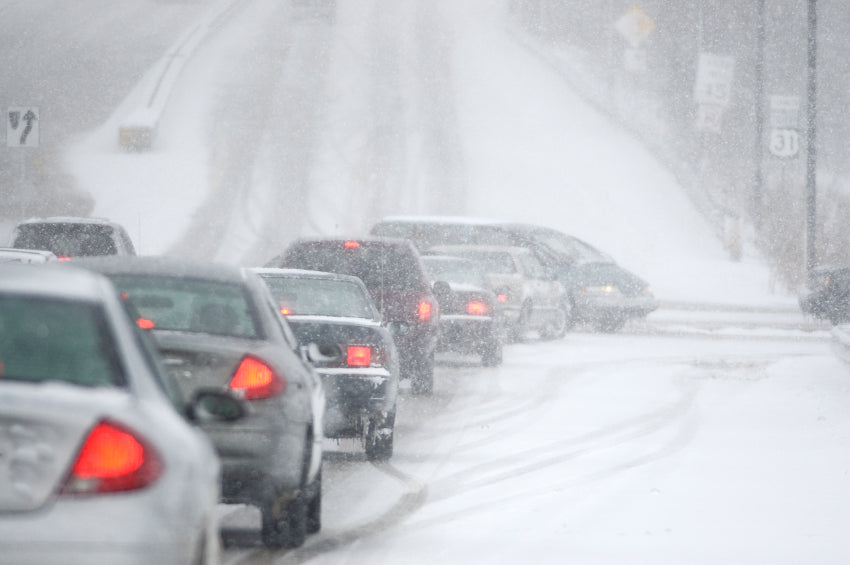
In the aftermath of a winter earthquake police and firefighters, already overwhelmed, could also be slowed by poor road conditions (without the functioning infrastructure in place to clear them). Government officials estimate that more than 60,000 people would flock through freezing temperatures and icy roads to public shelters. Health officials and rescuers would be so inundated that many residents would remain stranded in the dark and cold for days on end.
Parts of the valleys could be cut to pieces
Yet another geological reality of the region are the multiple faults spanning Salt Lake Valley—the most populous area in the state.
A large earthquake of 7.0 magnitude or higher would create a “scarp”—a roughly three-to-nine-foot high ledge—along these faults that would span Highland Drive in northeastern ends of the valley and Wasatch drive in the southeast. This eastern scarp would span 30 miles along the main fault, wreaking havoc to power and sewage lines and cutting off major traffic corridors. Another scarp along the Taylorsville and Granger faults would have the same impact across the western portions of the valley.
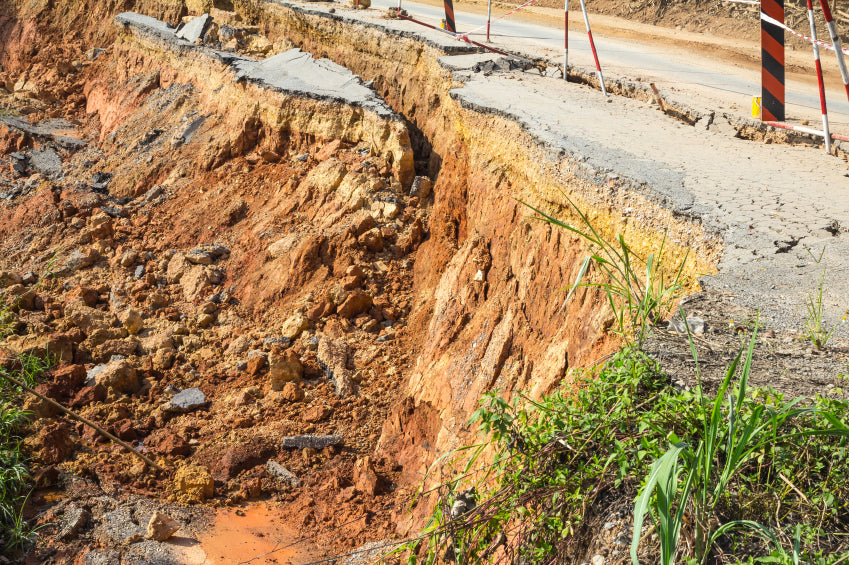
In total, Salt Lake County would be sliced to pieces—six pieces, to be precise—that would cut entire swaths of the valley off from one another, further complicating rescue efforts and setting recovery back significantly.
Utah isn’t even close to prepared
Though city and state governments have prioritized preparedness in recent years, many leaders are still concerned that the action plans and protocols don’t go far enough and are untested.
And while it’s hard to say how well prepared the
people of Utah are for a major earthquake, in one of the most important aspects of preparedness we still have a long way to go: the 150,000 buildings that have yet to be retrofit to withstand any type of earthquake, let alone one of 7.0 and above magnitude.
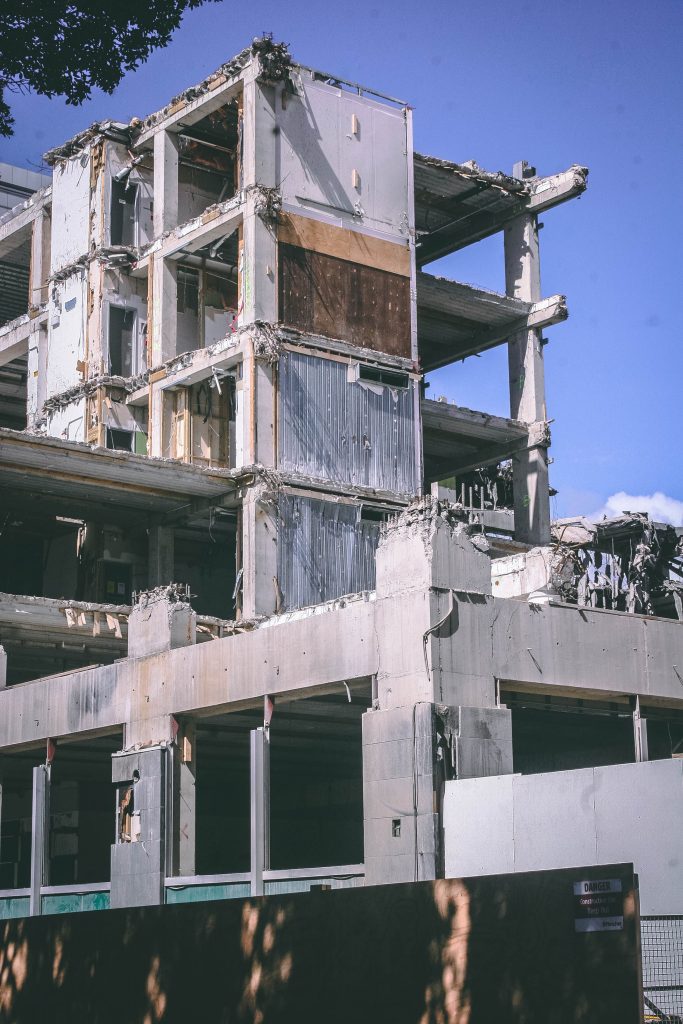
Especially vulnerable are schools. More than 500 brick schools in the Salt Lake Valley were built before the earthquake reinforcement building code in 1975 and have yet to be retrofit.
"Our vulnerability is increasing every year," said Dr. Walter Arabasz, former director of the University of Utah Seismograph Stations."Invariably, there's a terrible price to pay. We need to build resilient communities and take common-sense measures."
While Utah is making progress, most agree that it’s far too slow. We have a long way to go.
NEED HELP PREPARING FOR AN EARTHQUAKE? GET OUR DEFINITIVE PREP GUIDE!
Question 3: How do I prepare myself and my family to survive when the big one hits?
At the end of the day, we can only do so much. The best way to protect yourself and your family is to fully prepare.
After decades in the preparedness industry, we can give a list of some of the most useful tips for earthquake preparedness.
Let’s start with the very basics of earthquake safety:
Drop
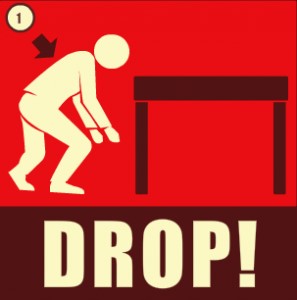
If you grew up in earthquake country, you probably learned this as a kid and it still holds true. Drop, cover, and hold is the best immediate response to an earthquake.
There’s no way around it. When the earth shakes many of us are simply going to fall, and depending on who you are and where you’re standing, this can be dangerous.
A surprising number of the injuries sustained during earthquakes could have been prevented by simply moving safely and quickly to the ground as soon as the shaking began.
Cover

Once you’ve dropped safely to the ground, the next big danger comes from falling objects. You’ll want to protect yourself against these, and the best way to do that is to move under or next to sturdy cover—with an emphasis on “sturdy.”
If possible, stay away from windows, exterior walls, and any place you’d be at risk of being hit by falling objects. If you’re outside, get yourself to a clear spot and stay put until it’s safe to move. Objects outside can be dangerous as well. Look out first and foremost for power lines, trees, and windows.
You may find yourself in a situation where you don’t have access to shelter indoors (a table, desk, etc.). If this is the case, the best thing to do is to protect your head and neck—the most vulnerable spots on your body to falling debris—with your arms.
Also important to know is that regardless of what you’ve been told, standing in a doorway in most buildings these days will do little to nothing to protect you. In modern buildings, and especially homes, doorways are no more structurally solid than the rest of the building. It also places you in a standing position, which makes you a larger target for falling debris.
Hold On
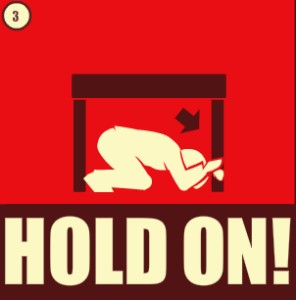
Remember, powerful earthquakes can jar and toss anything that isn’t bolted down, and when the shaking starts, your body is just another object. If you’re not holding on to something you’re at risk not only to fall, but to be jolted around.
So, after you’ve found cover, your next task is to find a way to brace yourself. Grab and hold the legs of a table or desk, brace yourself against a wall…whatever it takes.
And don’t forget. The danger doesn’t end when the earthquake does. In many cases, it’s only begun. Large aftershocks will almost always follow a major earthquake, so be on your guard. Once outside avoid power lines, trees, etc. and stay clear of debris that may well be full of life-threatening hazards.
Readying Your Property for an Earthquake: Five Steps
The best way to prepare yourself and your property to safely ride out an earthquake is to take steps long before an earthquake ever hits. Here are our top recommendations.
1) Insure your home against earthquakes
There’s always a chance you or someone you love will sustain a major injury or even lose your life during an earthquake. But the chances of damaged property are far higher still. A large earthquake can do anything from break windows and destroy expensive electronics to completely level your home. Either way, insurance gives you the ability to continue life normally as quickly as possible—can you imagine what you’d do without your home?
And don’t make the mistake of assuming you’re covered just because you have standard home insurance. Many policies won’t cover earthquake damage as standard, so you’ll have to purchase an extra option.
2) Make sure your home has a strong foundation
While building codes require that many new homes be built on foundations, older buildings are often held in place by their own weight. When you hear about buildings collapsing during an earthquake, these are most likely the first to go down. And even if they don’t collapse, they are far more vulnerable to cracking.
Short of paying to get your home retrofit (which we recommend if you can afford it), you can secure your home with anchor bolts. Prepare your home for an earthquake with anchor bolts attached between the walls and whatever serves as the foundation. This sounds expensive, but it should actually only put you out a few hundred dollars…a small price to pay to prevent major damage during an earthquake that could cost you hundreds of thousands of dollars or even destroy your home entirely.
3) Install a gas automatic shut off device
Another one of the biggest dangers during and after an earthquake are leaks in your gas main. Leaking gas can cause a house fire or sickness from fume inhalation.
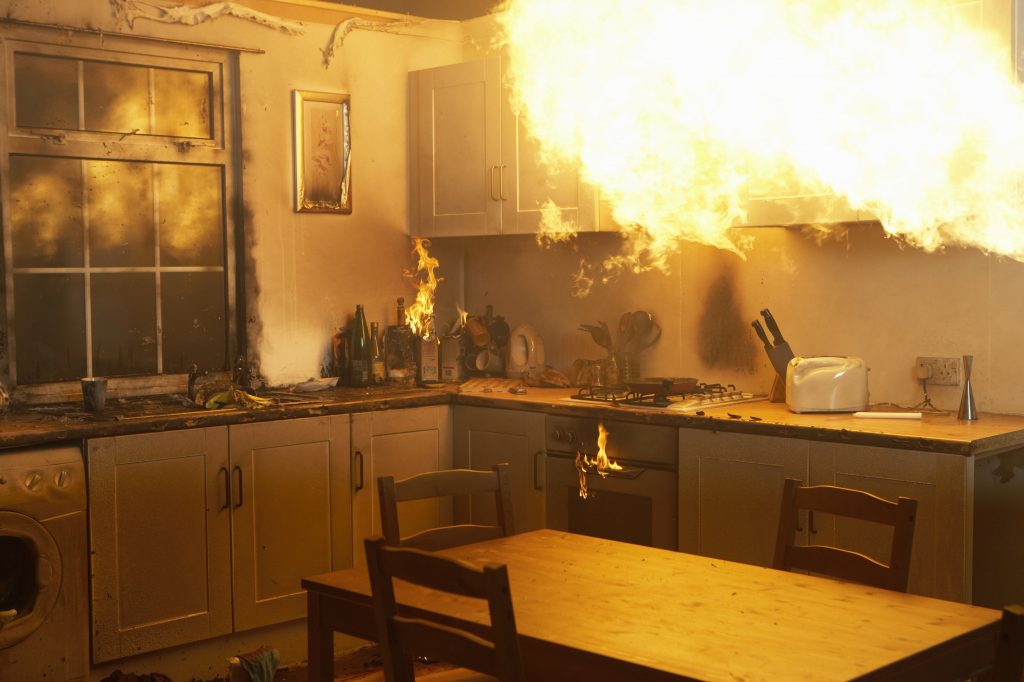
The good news is that gas leaks can easily be prevented by installing an automatic shutoff device. If an earthquake hits and you don’t have a shutoff device installed, quickly turn off the gas and power as quickly as possible and get them repaired by a professional.
4) Prepare your windows
Even though some experts estimate around one-third of buildings along the Wasatch Front could collapse during an earthquake, for the majority of homes the greatest hazard are their windows. During a major earthquake, glass shatters and goes flying, literally weaponizing inside your home. For anyone standing or sleeping near a window, this can spell severe wounds or worse.
As with gas leaks, danger from window glass is quite easy to prevent. Clear, shatterproof glass film is easy to find and relatively cheap. It won’t necessarily save your window from shattering, but it will hold the glass together and prevent it from coming loose and flying through your home.
5) Prepare heavy objects in your home
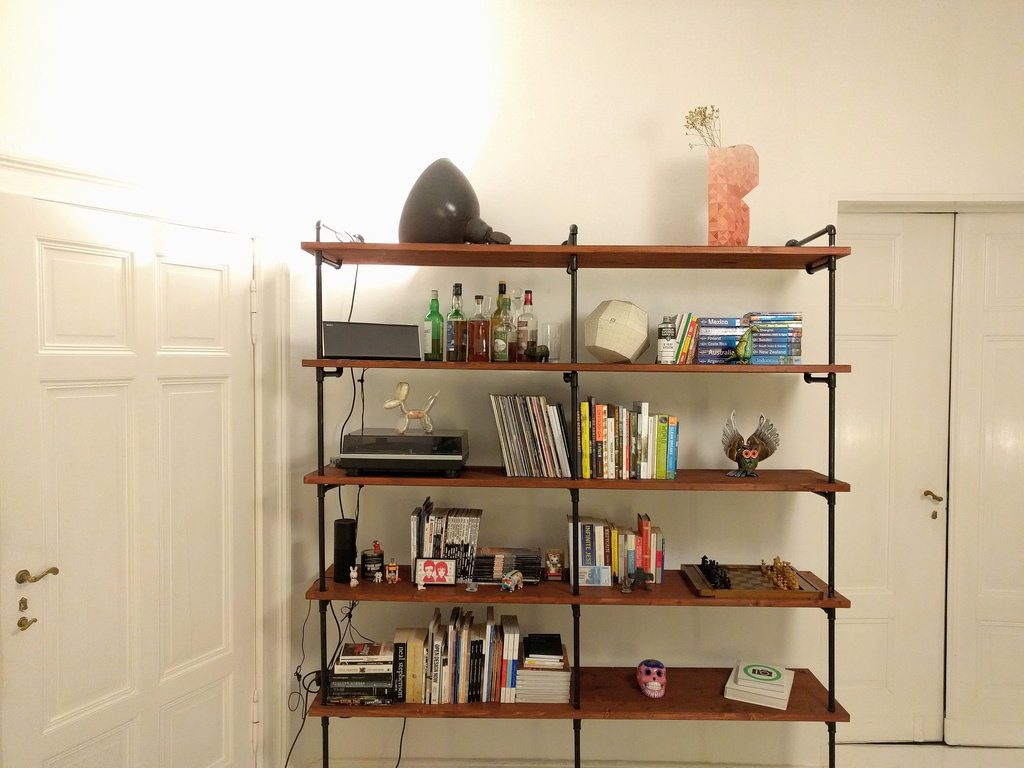
Apart from glass, your home if likely full of heavy objects (dressers, shelving, mirrors, electronics, water heaters, etc.). These also become major dangers during an earthquake. When possible, place these items as close to the ground as you can and affix them to the wall with bolts. This is a rule of thumb that will improve safety across a variety of areas in your home.
Other recommendations include:
- If you live in earthquake country, you may want to reconsider purchasing tables with glass tops. These become dangerous during an earthquake if items or people fall onto them, and at any rate they offer no protection in the way of cover.
- Place safety latches in all drawers and cupboards (they aren’t just for toddlers!). This will stop items from spilling out during an earthquake.
- Never hang heavy or glass objects (glass lamps, painting, etc.) right above locations like beds and couches.
- Don’t store dangerous chemicals (cleaner, bug sprays, etc.) on high shelves as these can come falling down and spill, causing contamination and injury.
And this is only the tip of the iceberg
Following the recommendations here, you’ll be far better off than most. However, these prep steps only scratch the surface. They don’t include things like how to safely survive the aftermath of an earthquake, medical supplies you’ll need, and how to stay in communication with loved ones and rescue officials when power and phone lines are down. And most importantly, they don’t show you how to ensure your family always has access to food and fresh water no matter what happens or where you find yourself.
To get a more complete set of prep recommendations to protect you and your family, download our Prep 101 eguide (in the forms above).

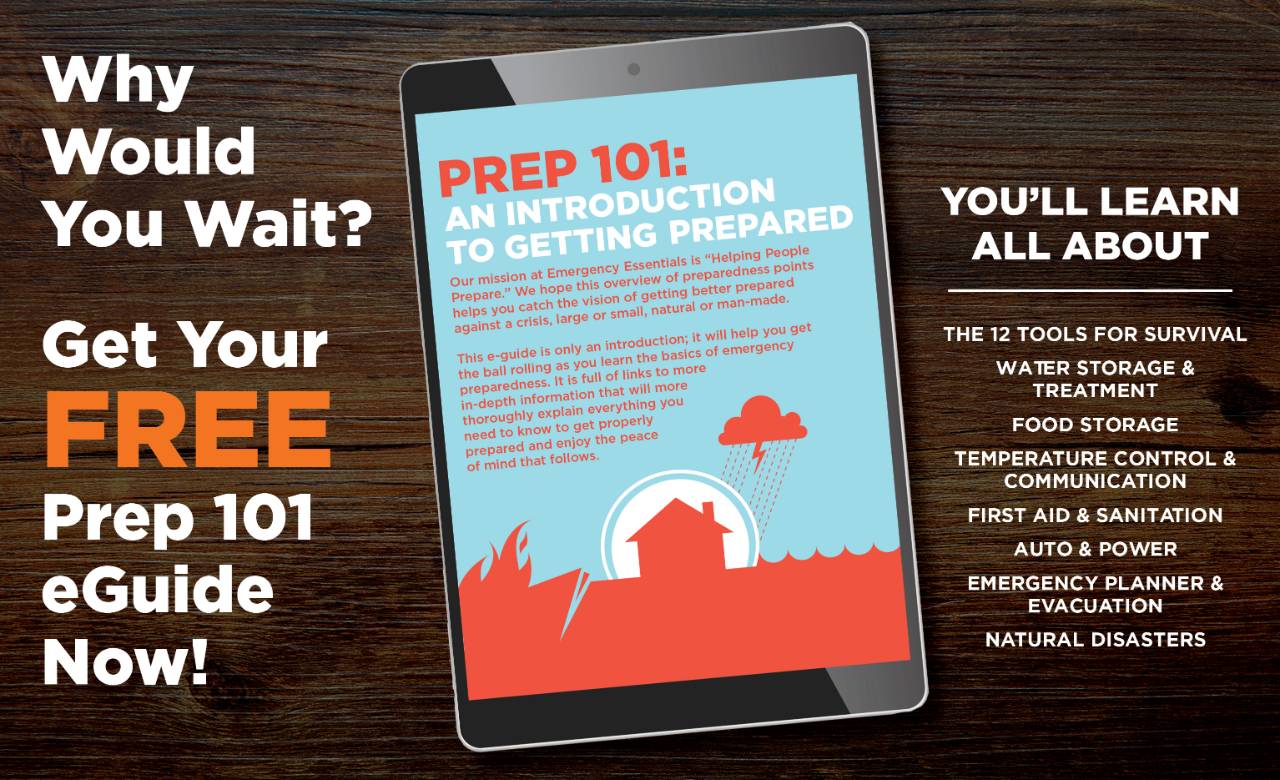
 In 6,000 years, most Utah earthquakes have occurred in this stretch in the most populated area of the state.[/caption]
For most of us in Utah, that small stretch of land has a very special name: home. 75% of the state’s population—a little over 2 million people—live in the four counties between Brigham City and Levan (Weber, Davis, Salt Lake, and Utah).
To give some perspective, the population of those adjacent counties is about on par with Cleveland and Pittsburgh and well above cities like New Orleans and Nashville. We’re no NYC, but we’re a major metropolitan area—hovering right around the top 30 in the country.
That means, short of California, we’ve got more humans crammed along a major fault line than almost anywhere else in the US. And unlike most places in California, there are a few unique geographic features that put us at especially acute risk in the event of a 7.0-plus earthquake.
In 6,000 years, most Utah earthquakes have occurred in this stretch in the most populated area of the state.[/caption]
For most of us in Utah, that small stretch of land has a very special name: home. 75% of the state’s population—a little over 2 million people—live in the four counties between Brigham City and Levan (Weber, Davis, Salt Lake, and Utah).
To give some perspective, the population of those adjacent counties is about on par with Cleveland and Pittsburgh and well above cities like New Orleans and Nashville. We’re no NYC, but we’re a major metropolitan area—hovering right around the top 30 in the country.
That means, short of California, we’ve got more humans crammed along a major fault line than almost anywhere else in the US. And unlike most places in California, there are a few unique geographic features that put us at especially acute risk in the event of a 7.0-plus earthquake.
 Foremost among these are two major lakes: the Utah and Great Salt lakes, both them very close to major cities and hemmed in (at least in part) by mountains. Experts at the University of Utah Seismograph Stations warn that with the geological makeup of these valleys, a large earthquake could easily trigger ”soil liquefaction, landslides, rock falls, and broad permanent tilting of valley floors possibly causing the Great Salt Lake or Utah Lake to inundate parts of Salt Lake City or Provo.”
Foremost among these are two major lakes: the Utah and Great Salt lakes, both them very close to major cities and hemmed in (at least in part) by mountains. Experts at the University of Utah Seismograph Stations warn that with the geological makeup of these valleys, a large earthquake could easily trigger ”soil liquefaction, landslides, rock falls, and broad permanent tilting of valley floors possibly causing the Great Salt Lake or Utah Lake to inundate parts of Salt Lake City or Provo.”
 Floods may not sound too intimidating to folks in the middle of the country, but ask our friends in the coastal US—they’re just about the worst threat possible to property and life. During Hurricanes, for example, it’s not wind but floodwaters that cause most fatalities and skyrocket damages into the billions of dollars.
Floods may not sound too intimidating to folks in the middle of the country, but ask our friends in the coastal US—they’re just about the worst threat possible to property and life. During Hurricanes, for example, it’s not wind but floodwaters that cause most fatalities and skyrocket damages into the billions of dollars.
 In the aftermath of a winter earthquake police and firefighters, already overwhelmed, could also be slowed by poor road conditions (without the functioning infrastructure in place to clear them). Government officials estimate that more than 60,000 people would flock through freezing temperatures and icy roads to public shelters. Health officials and rescuers would be so inundated that many residents would remain stranded in the dark and cold for days on end.
In the aftermath of a winter earthquake police and firefighters, already overwhelmed, could also be slowed by poor road conditions (without the functioning infrastructure in place to clear them). Government officials estimate that more than 60,000 people would flock through freezing temperatures and icy roads to public shelters. Health officials and rescuers would be so inundated that many residents would remain stranded in the dark and cold for days on end.
 In total, Salt Lake County would be sliced to pieces—six pieces, to be precise—that would cut entire swaths of the valley off from one another, further complicating rescue efforts and setting recovery back significantly.
In total, Salt Lake County would be sliced to pieces—six pieces, to be precise—that would cut entire swaths of the valley off from one another, further complicating rescue efforts and setting recovery back significantly.
 Especially vulnerable are schools. More than 500 brick schools in the Salt Lake Valley were built before the earthquake reinforcement building code in 1975 and have yet to be retrofit.
"Our vulnerability is increasing every year," said Dr. Walter Arabasz, former director of the University of Utah Seismograph Stations."Invariably, there's a terrible price to pay. We need to build resilient communities and take common-sense measures."
While Utah is making progress, most agree that it’s far too slow. We have a long way to go.
Especially vulnerable are schools. More than 500 brick schools in the Salt Lake Valley were built before the earthquake reinforcement building code in 1975 and have yet to be retrofit.
"Our vulnerability is increasing every year," said Dr. Walter Arabasz, former director of the University of Utah Seismograph Stations."Invariably, there's a terrible price to pay. We need to build resilient communities and take common-sense measures."
While Utah is making progress, most agree that it’s far too slow. We have a long way to go.

 If you grew up in earthquake country, you probably learned this as a kid and it still holds true. Drop, cover, and hold is the best immediate response to an earthquake.
There’s no way around it. When the earth shakes many of us are simply going to fall, and depending on who you are and where you’re standing, this can be dangerous.
A surprising number of the injuries sustained during earthquakes could have been prevented by simply moving safely and quickly to the ground as soon as the shaking began.
If you grew up in earthquake country, you probably learned this as a kid and it still holds true. Drop, cover, and hold is the best immediate response to an earthquake.
There’s no way around it. When the earth shakes many of us are simply going to fall, and depending on who you are and where you’re standing, this can be dangerous.
A surprising number of the injuries sustained during earthquakes could have been prevented by simply moving safely and quickly to the ground as soon as the shaking began.
 Once you’ve dropped safely to the ground, the next big danger comes from falling objects. You’ll want to protect yourself against these, and the best way to do that is to move under or next to sturdy cover—with an emphasis on “sturdy.”
If possible, stay away from windows, exterior walls, and any place you’d be at risk of being hit by falling objects. If you’re outside, get yourself to a clear spot and stay put until it’s safe to move. Objects outside can be dangerous as well. Look out first and foremost for power lines, trees, and windows.
You may find yourself in a situation where you don’t have access to shelter indoors (a table, desk, etc.). If this is the case, the best thing to do is to protect your head and neck—the most vulnerable spots on your body to falling debris—with your arms.
Also important to know is that regardless of what you’ve been told, standing in a doorway in most buildings these days will do little to nothing to protect you. In modern buildings, and especially homes, doorways are no more structurally solid than the rest of the building. It also places you in a standing position, which makes you a larger target for falling debris.
Once you’ve dropped safely to the ground, the next big danger comes from falling objects. You’ll want to protect yourself against these, and the best way to do that is to move under or next to sturdy cover—with an emphasis on “sturdy.”
If possible, stay away from windows, exterior walls, and any place you’d be at risk of being hit by falling objects. If you’re outside, get yourself to a clear spot and stay put until it’s safe to move. Objects outside can be dangerous as well. Look out first and foremost for power lines, trees, and windows.
You may find yourself in a situation where you don’t have access to shelter indoors (a table, desk, etc.). If this is the case, the best thing to do is to protect your head and neck—the most vulnerable spots on your body to falling debris—with your arms.
Also important to know is that regardless of what you’ve been told, standing in a doorway in most buildings these days will do little to nothing to protect you. In modern buildings, and especially homes, doorways are no more structurally solid than the rest of the building. It also places you in a standing position, which makes you a larger target for falling debris.
 Remember, powerful earthquakes can jar and toss anything that isn’t bolted down, and when the shaking starts, your body is just another object. If you’re not holding on to something you’re at risk not only to fall, but to be jolted around.
So, after you’ve found cover, your next task is to find a way to brace yourself. Grab and hold the legs of a table or desk, brace yourself against a wall…whatever it takes.
And don’t forget. The danger doesn’t end when the earthquake does. In many cases, it’s only begun. Large aftershocks will almost always follow a major earthquake, so be on your guard. Once outside avoid power lines, trees, etc. and stay clear of debris that may well be full of life-threatening hazards.
Remember, powerful earthquakes can jar and toss anything that isn’t bolted down, and when the shaking starts, your body is just another object. If you’re not holding on to something you’re at risk not only to fall, but to be jolted around.
So, after you’ve found cover, your next task is to find a way to brace yourself. Grab and hold the legs of a table or desk, brace yourself against a wall…whatever it takes.
And don’t forget. The danger doesn’t end when the earthquake does. In many cases, it’s only begun. Large aftershocks will almost always follow a major earthquake, so be on your guard. Once outside avoid power lines, trees, etc. and stay clear of debris that may well be full of life-threatening hazards.
 The good news is that gas leaks can easily be prevented by installing an automatic shutoff device. If an earthquake hits and you don’t have a shutoff device installed, quickly turn off the gas and power as quickly as possible and get them repaired by a professional.
The good news is that gas leaks can easily be prevented by installing an automatic shutoff device. If an earthquake hits and you don’t have a shutoff device installed, quickly turn off the gas and power as quickly as possible and get them repaired by a professional.
 Apart from glass, your home if likely full of heavy objects (dressers, shelving, mirrors, electronics, water heaters, etc.). These also become major dangers during an earthquake. When possible, place these items as close to the ground as you can and affix them to the wall with bolts. This is a rule of thumb that will improve safety across a variety of areas in your home.
Other recommendations include:
Apart from glass, your home if likely full of heavy objects (dressers, shelving, mirrors, electronics, water heaters, etc.). These also become major dangers during an earthquake. When possible, place these items as close to the ground as you can and affix them to the wall with bolts. This is a rule of thumb that will improve safety across a variety of areas in your home.
Other recommendations include:



4 comments
Ben Sherman
Well written, informative, thanks
DJ Sprague
This is a very helpful resource! Thank you.
Sarah Smith
Thank you for your advice to find shatterproof glass film for our windows so shards don’t come flying into our house. My husband has been going to a night class that goes over basic family finance principles for the past month. His teacher mentioned how important it is to be prepared for a major earthquake or fire, so we’ll start looking into a glass service that can help us update our windows. http://www.sandersglass.com/residential-glass
Thayne Rasmussen
Thanks! Very important and helpful information! However, we are old and disabled and have been on a fixed income since 1999! Other people’s help would be needed! Sometimes neighbors help and sometimes don’t! At their mercy or that of my church!